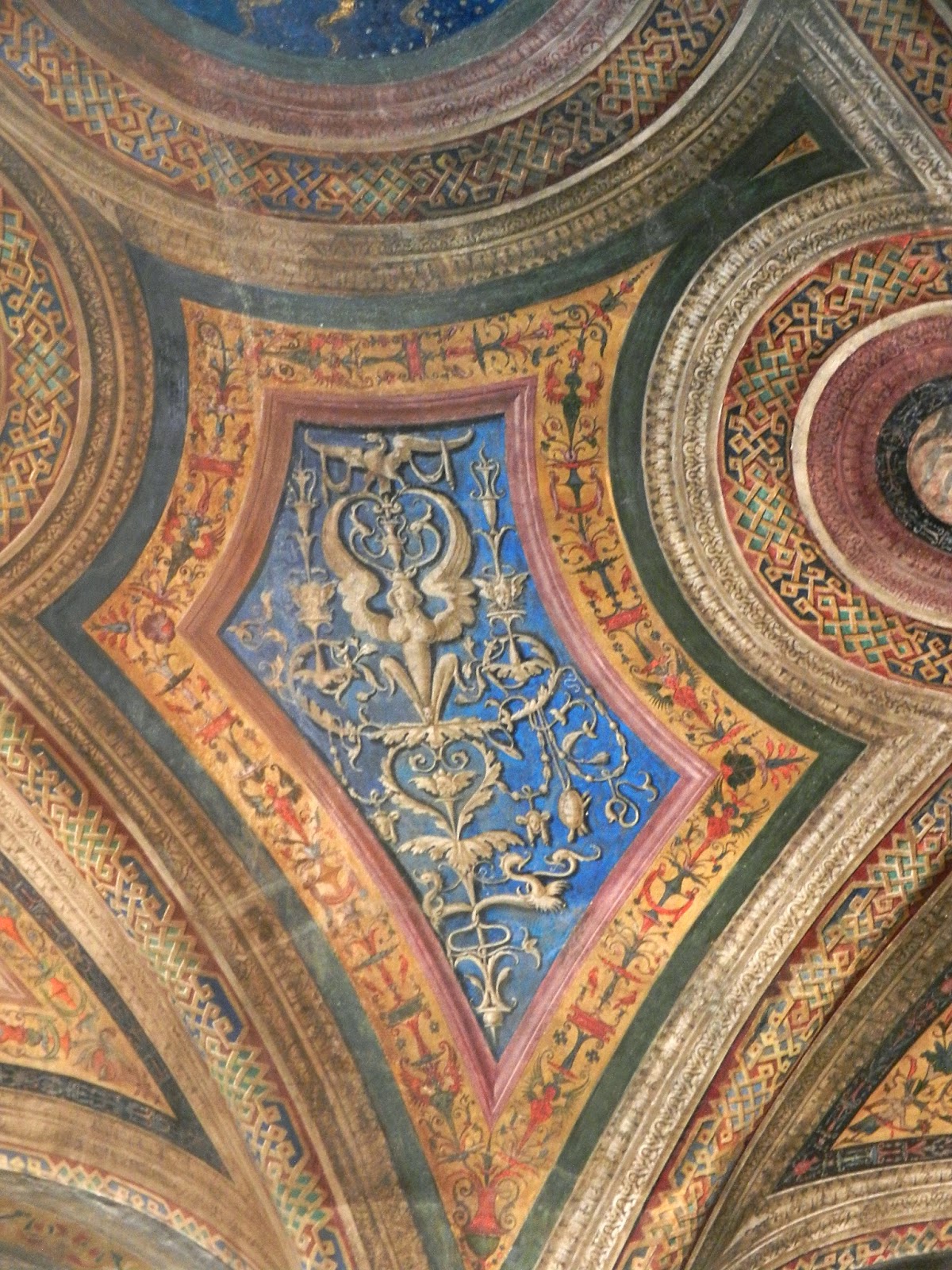Got up to a very nice breakfast at our place, the Hotel Giglio, which has been in use as a hotel there since 1912. Our hostess was a very helpful woman whose whole family helps out with running the place. The dining room really reminded me of places I stayed in on my first trip to Europe with my family when I was 15: a well lit room with white cloths on the tables, a nice selection of fresh baked breads, tarts and rolls, that weird Tang-style OJ they seem to prefer there, yogurt and fresh fruits. The guests were all older Italian tourists, with some real characters.
We took the train back down to Parma to see the sights, first walking along the river where a class of art students were busily sketching the view across the way. Pretty cool! Our first stop was the Pinacoteca (art museum) in the massive Palazzo Pilotta. Actually, the first part of the museum was an unexpected stunner. The Teatro Farnese, a baroque space built for the Farnese family in 1618. It was almost completely destroyed in WWII, but was quickly rebuilt using as much of the original as they could salvage. It is gigantic- they actually had dramas there with floating barges on the flooded floor space, and the stage area, said to be one of the first using a proscenium arch (as opposed to a fixed stage facade) is large enough to fit any modern drama of today. The oddest part of the stage is the floor, which tilts fairly severely towards the front. Makes "hitting your mark" even more critical- or you'll end up in the orchestra! There are still some pretty good traces of the original trompe l'oeil painting on the wooden parts, though you can't go up in the seating areas right now.
 |
| Immense space of the Teatro Farnese as seen from the stage. |
The theater led into the art museum, which had a large collection of medieval and Renaissance art, including an exquisite oil sketch by Leonardo da Vinci, and a healthy dose of paintings by Coreggio and Parmigianino, two artists who are well represented in the churches and palazzi of Parma. Very interesting work by both of these artists, who injected a strong dose of playfulness and sexuality into the usual subjects of religious scenes, mythology, and portraits.
 |
| Da Vinci's small oil at the Pinacoteca. Incrdible softness! |
After that we had lunch at a nice local place full of both tourists and non, then wandered out in the wet to try and find the Camera di San Paolo, one of Correggio's masterpieces. Sadly, we missed their open hours by a half hour, so we clomped over to see the Duomo and the Baptistery, which were also closed, though reopening in half an hour. We finally found one of the target spots, Santa Maria della Steccata, a church decorated in a very unusual style. It was very dirty and a bit tough to see at first, but then it began to emerge, especially when someone put a Euro in the coin box to illuminate it with the artificial lights. The place has a very painterly touch, with much less trompe l'oeil ornament than what you see in most other churches in Italy, instead graphic black and white panels on the walls and pilasters, and colors on the ceiling, with many figures that come in front of the architectural elements, including many that are very large scale. Both Correggio and Parmigianino worked on the church, though Correggio did most of the dome area.
 |
| Looks like Moses is about the spank that ass! At the Church of Santa Maria della Steccata, in Parma |
By this time the Duomo had opened, so we went in there for a second shot of Correggio and were not disappointed. Again a very different feeling to the decoration of this church. Correggio gets credit for some the first "swirling sky" heavens murals, but it was the scale and decoration of the main apse that really caught my attention. Figures in the roundels were huge, and seemed to really be looking down at the interior, and the use of dark greens and golds with black and white fills were quite unique.
 |
| Ceiling of the Parma Duomo |
Decided to pass on the interior of the pink and white baptistery (for 6 Euros), and so we slowly went back to the train station, feeling like we had probably missed some of the better parts of Parma on this rainy and closed down day. Would also really like to rent a car in this area to take in some of the many local castles and villas, including the Castello Fontanellato (another magical Correggio mural of Diana and Acteon) and Torrechiara, which has some really good grottesca work.
 |
| C'mon, can you really take a pink lion seriously? In front of the Duomo. |
Got back to Salsomaggiore and tried a different bath, which cost half as much as Berzieri, but was again not hot enough (with the exception of the Turkish Bath, which was nice and steamy hot). Seems like most Italian spas are still somewhere between a hospital and a relaxation center, not quite decided on where they want to be. Went to bed after deciding we'd spend the next night close to Malpensa Airport so that we could get over there early in the morning for the flight home.
















































